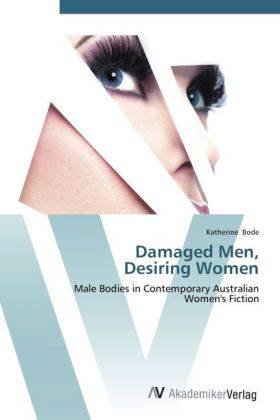
- Afhalen na 1 uur in een winkel met voorraad
- Gratis thuislevering in België vanaf € 30
- Ruim aanbod met 7 miljoen producten
- Afhalen na 1 uur in een winkel met voorraad
- Gratis thuislevering in België vanaf € 30
- Ruim aanbod met 7 miljoen producten
Zoeken
Damaged Men, Desiring Women
Male Bodies in Contemporary Australian Women's Fiction
Katherine Bode
Paperback | Engels
€ 86,22
+ 172 punten
Omschrijving
Revision with unchanged content. Masculinity is an increasingly prominent and important issue in debates within feminism, literary studies and visual theory. This study intervenes in and contributes to such debates by analysing an emerging group of novels by Australian women (published between 1998 and 2002) which focus on male characters and, in particular, on the description and narrative potential of their bodies. The novels explored in this book share two preoccupations. Firstly, they present male characters' bodies as damaged or suffering; secondly, the ability (or inability) of female characters to look at these bodies is repeatedly foregrounded. I argue that the interactions between male characters' bodies and female characters' gazes function in complex ways both to confirm and to challenge patriarchal constructions of masculinity and male corporeality. Specifically, this occurs in relation to the engagement of each text with popular discourses of feminism and masculinity crisis, discourses that emerge and interact in complex and often contradictory ways in depictions of male visibility and exposure. This book is addressed to scholars interested in feminism, masculinity studies, visual theory and/or Australian literary and cultural studies.
Specificaties
Betrokkenen
- Auteur(s):
- Uitgeverij:
Inhoud
- Aantal bladzijden:
- 296
- Taal:
- Engels
Eigenschappen
- Productcode (EAN):
- 9783639453409
- Verschijningsdatum:
- 20/08/2012
- Uitvoering:
- Paperback
- Formaat:
- Trade paperback (VS)
- Afmetingen:
- 152 mm x 229 mm
- Gewicht:
- 435 g

Alleen bij Standaard Boekhandel
+ 172 punten op je klantenkaart van Standaard Boekhandel
Beoordelingen
We publiceren alleen reviews die voldoen aan de voorwaarden voor reviews. Bekijk onze voorwaarden voor reviews.








